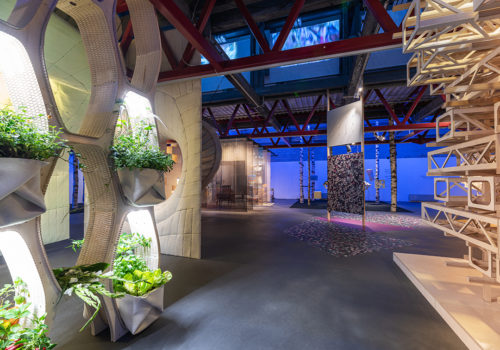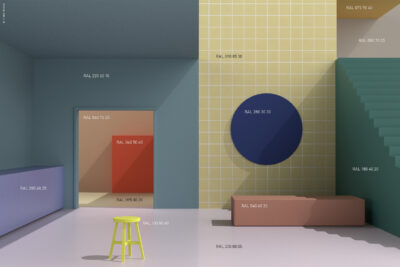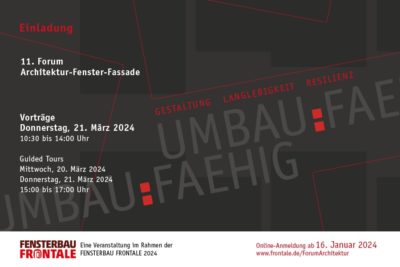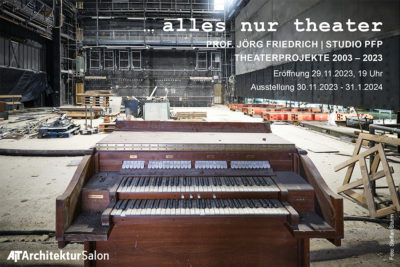An introduction to the Tallinn Architectural Biennale 2019, on why beauty matters again
- Ausstellung – Sou Fujimoto
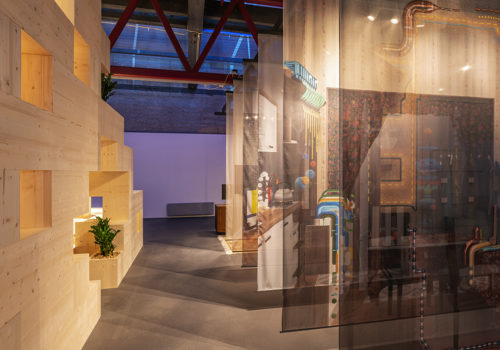
Ausstellung – Sou Fujimoto und Space Popular
Why does beauty matter? Throughout most of the 20th century, in the visual arts and the humanities – including architecture, politics, psychology, poetry and music – beauty became a denigrated phenomenon, a taboo word. Yet the emotional experience of it has remained real, with people referring to it on a daily basis.
By Dr. Yael Reisner
The most influential thinker on contemporary ideas of art and aesthetics, Immanuel Kant, writing in 1790, described aesthetic judgement as ‘disinterestedly free’ and beauty as ‘purposefulness without purpose’. Four decades earlier, another German philosopher, Alexander Gottlieb Baumgarten, in his work Aesthetica (1750), had defined the modern use of aesthetics and subjectivity as associated terms, in that rejection of one reduces the other.
Mies van der Rohe’s statements
Architecture’s aspiration to beauty was pre-eminent for thousands of years, triumphantly leading the visual arts until the 1920s when Early Modernism generated a significant new aesthetic. Architects’ troubled relationship with beauty began in the 1940s, when objectivity ruled – as captured by Mies van der Rohe’s statement on ‘objective limits’ and ‘no subjective licence’. Since then, architectural discourse has evolved, with short periods of questioning the dubious approach towards subjectivity, and longer periods of trusting objectivity. In time the status of beauty was eroded as it came to be associated with old- world, non-progressive values. The only two disciplines that continued to acknowledge beauty’s power in this period were mathematics and neuroscience, which have consequently contributed the most in recent times to our understanding of its relevance to human life and knowledge. Meanwhile, it seems that 100 years of neglect have reduced architects’ ability to explore the real depth of beauty. When asked to describe beauty in architecture, most refer to the Renaissance ideal of perfection, and some to an elegant line or a neat detail, without reference to beauty’s much deeper and enigmatic qualities.
New trust in the role of subjectivity
it is no surprise that beauty matters anew. It is reflective of a cultural shift from an interest in what is categorised as objective, into trust in the role of subjectivity; of a fascination supported by new knowledge emanating from different disciplines. This change in position invites and unleashes new inquiries into both subjectivity and beauty.
I was lucky to be present at the two great platforms, promoting and almost campaigning for and stirring that topic at the architecture discourse, in the Tallinn architecture Biennale’s curatorial exhibition, symposium, catalogue and Vision Competition. I was convinced it is timely to bring the topic Beauty Matters into the architectural circles. I argued for it, as in our Post digital days, while the curatorship of the TAB 2019, was opened to compete for, in May 2018, and I was delighted to win it. Thus September 2019 was the month, and in its middle, both were launched, the TAB 2019 was opened, along its symposium.
Each platform covers different material
In each platform though dealing with the same subject, the content and contributors are different, including my respective introductions, each covers different material. The contributors in both includes Neuroscientists, Semir Zeki, and a Taylor Enoch, both from UCL, mathematicians (Robbert Dijkgraaf, a mathematical physicist the head of the Institute for Advanced Study, in Princeton), and Ron Aharoni, a mathematician from the Technion in Haifa, who wrote “Mathematics Poetry and Beauty”), the philosopher Graham Harman (same one in both – with two different articles), the poetess Maria Lee, Tallinn, and architects – academics and practitioners, well known and less so.
The Curatorial Exhibition Participants
Sou Fujimoto, Kadri Kerge, KTA, Elena Manfredini, MARCH studio, soma, Space Popular, Barnaby Gunning Studio & Yael Reisner Studio
Symposium Participants
Ron Aharoni, Taylor Enoch, Graham Harman, Maria Lee Liivak, Kim Listman, Paula Strunden, Jakob Tulve and Nathan Tulve
Architect Dr. Yael Reisner (1953) is a registered architect, designer, academic, researcher and writer. She has a PhD in architecture from RMIT Melbourne, Australia, a Diploma from the Architectural Association in London, including RIBA part 1 and part 2, and a BSc in Biology from the Hebrew University, Jerusalem. Born in Tel Aviv, she has lived in London since 1990, where she is the director of Yael Reisner Studio, an architectural research-led practice founded in 1988. Since 2005, Reisner has taught internationally (Sci Arc, Los Angeles; Lund University; AA, London; ESA, Paris; Confluence, Lyon), following nine years at the Bartlett (UCL) where she was the MArch course coordinator and a group tutor, as well as a Unit Master of Diploma Unit 11. In 2017, she was a guest professor at the Peter Behrens School of the Arts / Architecture and Design (Düsseldorf University of Applied Sciences). In April 2010, Reisner’s book, written with Fleur Watson, Architecture and Beauty, Conversations with Architects about A Troubled Relationship, was published by Wiley UK, and was the trigger for six symposiums at the Royal Academy, London; Venice Biennale; Lund University; SCI Arc, Los Angeles; Pratt Institute, NY; and Tel Aviv University. The book was translated into Chinese in 2014.
In 2011, she was invited by the late Will Alsop to curate an exhibition at TESTBED1 Gallery in Battersea, London. Turning the Tables consisted of fourteen newly designed tables, by the fourteen architects she selected to exhibit. Moreover, her Gaetano Pesce Retrospective Exhibition will take place at the Design Museum, London. Yael Reisner Studio is committed to research-led projects, focusing on increasing the human wellbeing factor in ecological architecture and urban environment, where the pursuit of the experience of beauty is the core aspiration.
Its various proposals include the public installation Take My Hand, Rights and Weddings, in 2014, at Placa de La Merce, Barcelona, designed by her studio and managed by Yael, alongside the overall production by Enric Miralles Foundation, and the interior installation, In The Mirror (Beijing, 2015) designed with Barnaby Gunning, for the art exhibition ‘Tomorrow’s Party’ which focused on digital art augmented by analogue artifice and was curated by Chinese art curator Shang Shang.
Die Tallinn Architecture Biennale (TAB 2019) endet am 3. November 2019.
Mehr Informationen: www.tab.ee
Fotos: Evert Palmets
- soma und KTA
- Ausstellung
- Yael Reisner und Barnaby
- Symposium
- Symposium – Sou Fujimoto, Yael Reisner und MARCH studio
- Taylor Enoch und Graham Harman
- Symposium
- Yael Reisner








